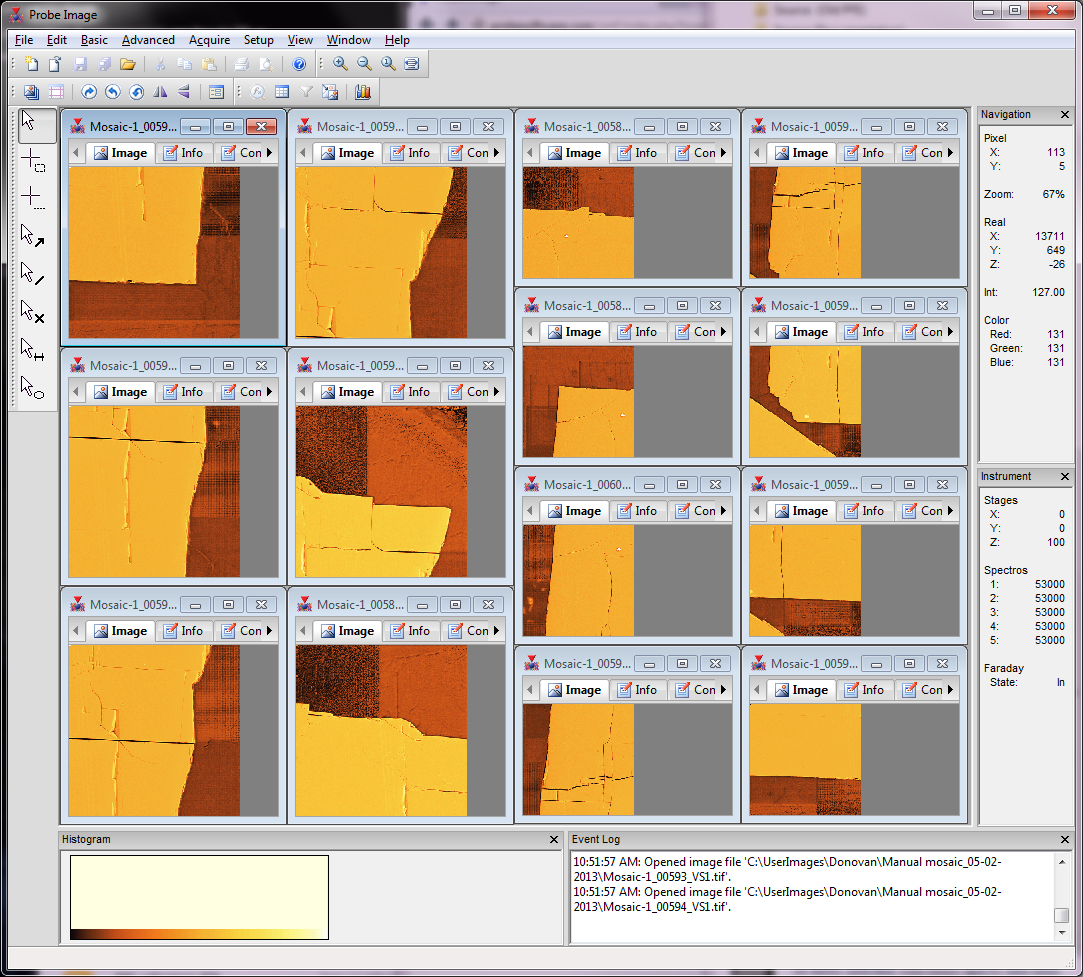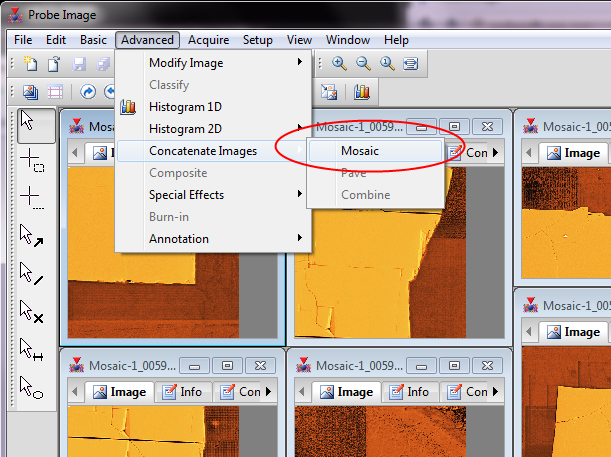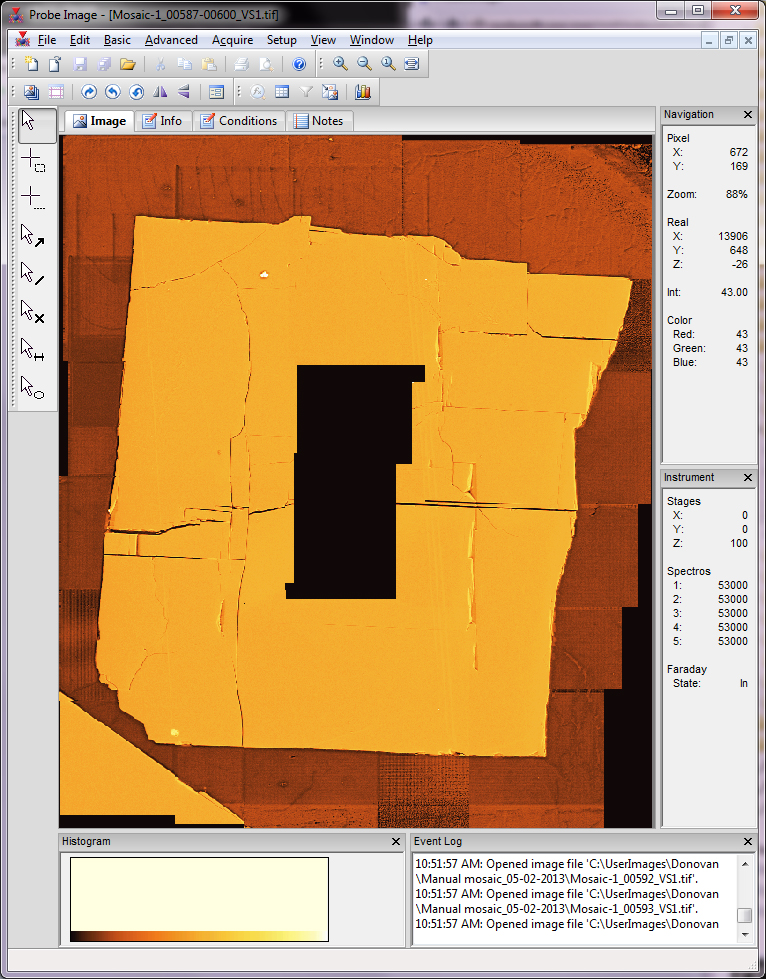Did you know you can take randomly acquired images and "mosaic" them together with just a few mouse clicks?
Here are some BSE images obtained by "walking" around the boundary of a grain. Or acquire them automatically.

Now using the Mosaic menu as seen here:

One can obtain the following mosaic by simply clicking on each image you want to include and then OK. ProbeImage figures it all out for you based on the real world stage coordinates of each pixel:

Even if each image is a different size, mag or stage extents...
